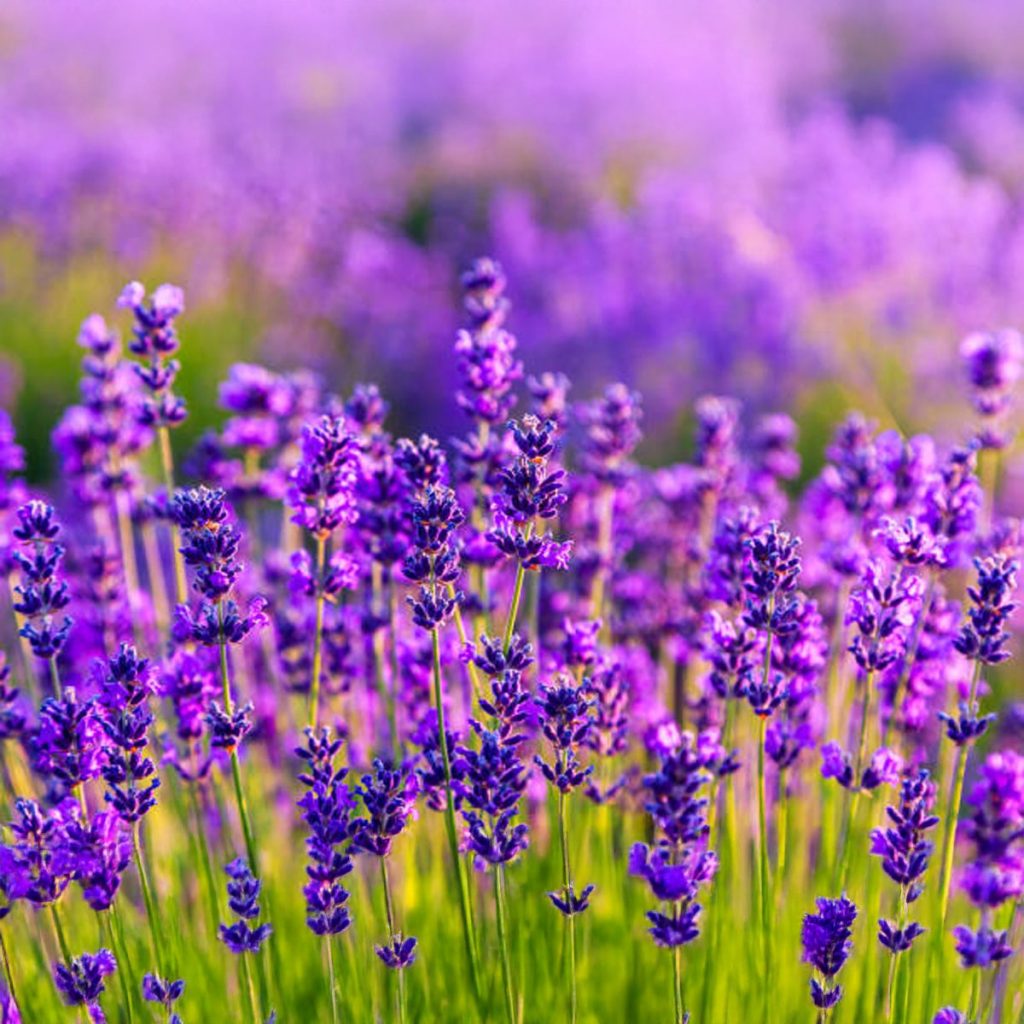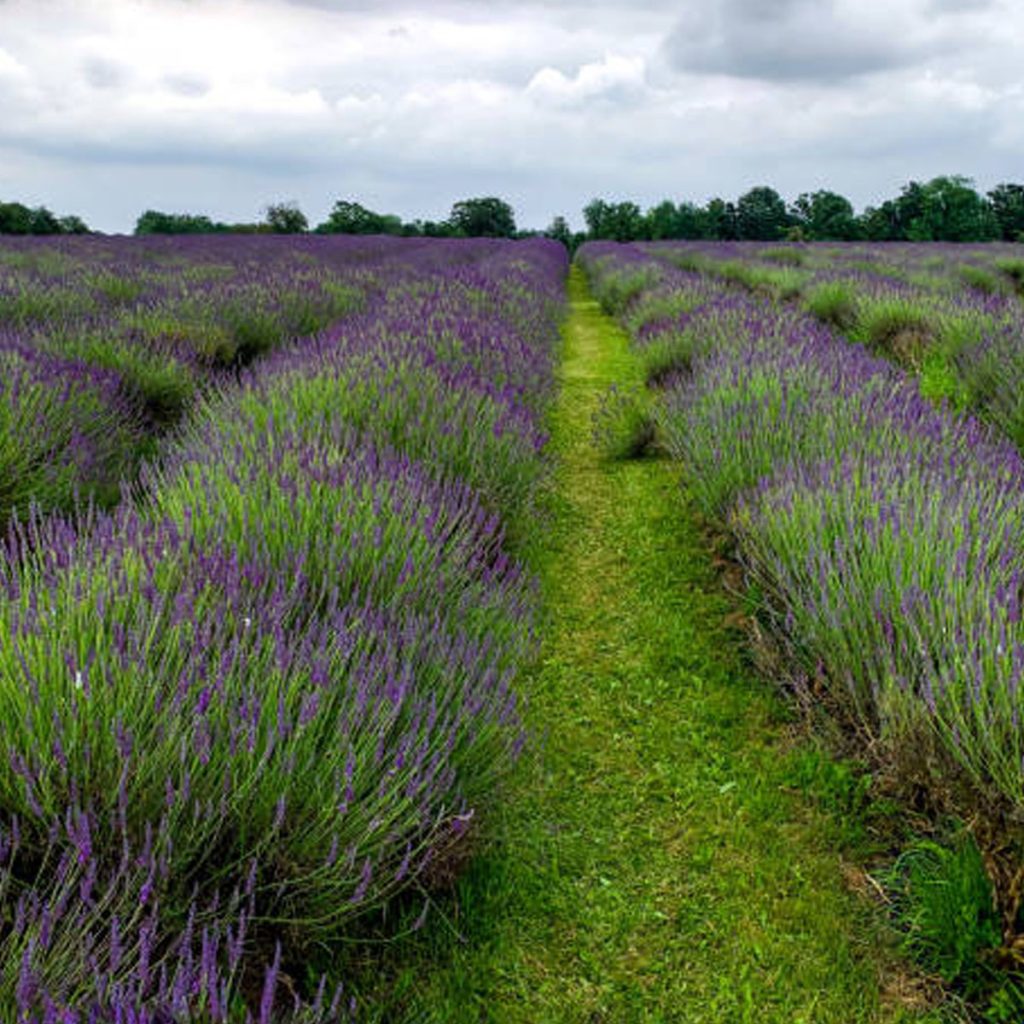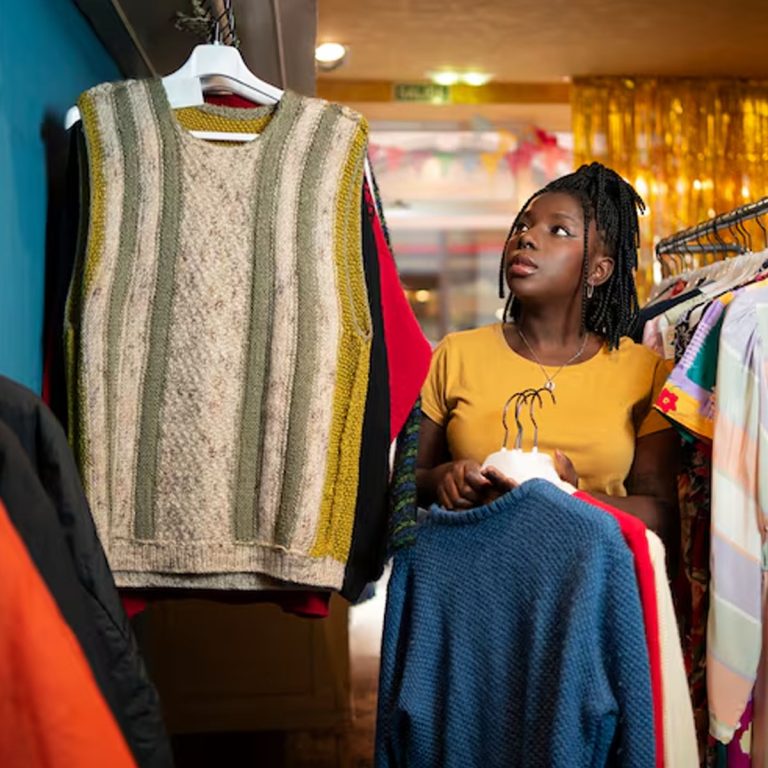At first sight, it is startling. Deep purple bands run to the horizon, bees turn the air into a low electrical hum, and a chalky breeze carries the clean, herbal note that made Surrey famous long before mass travel. The image is familiar because Mayfield Lavender Farm has become one of Britain’s most photographed landscapes. It is also a working business, a seasonal visitor economy, and a heritage project that sits on the edge of London. In 2025, the questions that matter are hard-nosed. Who owns it, and why does that matter? How do certified organic standards shape what grows and what gets sold? What does social attention do to traffic, pricing, and the land itself? This report addresses those questions with verifiable facts, a focus on operations, and context that places the fields within the broader story of British agriculture and local planning. The goal is clarity for readers who need substance, not sentiment.
Mayfield Lavender Farm presents a calm public face yet runs on tight seasonal cycles, careful demand management, and a structure that has matured with its success. The business now spans two sites, one seasonal and largely agricultural at Banstead, and one year-round with café, retail, and horticulture at Epsom. The fields deliver the summer spectacle and the raw material for lavender essential oil. The Epsom site extends the brand throughout the year and softens the risk of weather, crop timing, and short visitor windows. Together they form a single operation designed to convert a narrow harvest into a stable enterprise. The detail that follows sets out ownership, governance, visitor policy, production methods, and the local factors that could shape outcomes over the next two seasons.
Corporate structure and control in plain view
The operator is Mayfield Lavender Limited, incorporated on 8 May 2006 under Company Number 05808954, with SIC 01280, growing of spices, aromatic, drug and pharmaceutical crops. The directors are Brendan Eoghan Maye and Lorna Mary Maye. Companies House filings confirmed in January 2023 show that on 11 September 2020, both directors ceased to be persons with significant control. On that date, Rockham Holdings Ltd became the sole person with significant control. In practice, this means ultimate control moved from individual owners to a holding company.
The change aligns with patterns seen in maturing family businesses. A holding company can support tax planning, asset protection, and future investment. It also places distance between day-to-day operations and ultimate ownership, which can help when a growing visitor business must ensure, borrow, and invest against short seasonal cash flow. The public story continues to stress family origins and stewardship. The filings add a second layer. A formal corporate frame now supports the brand, the visitor operation, and the production of organic lavender products.
Two sites support a resilient year round model
The dual-site structure is central. The Banstead farm at 1 Carshalton Road, SM7 3JA, covers 25 acres of certified organic lavender. It opens each summer for a short, intense season. Visitors come for the lavender fields, tractor rides, and an alfresco café. The Epsom site at 139 Reigate Road, KT17 3DW, covers 12 acres, was a derelict nursery acquired in 2010, and is now a permanent base with the Glasshouse Café, shop, and plant nursery. It also houses the Secret Lavender Garden, a smaller, timed attraction within the same campus.
The model spreads risk and supports staff retention. The Banstead site concentrates footfall and media attention into eight to ten weeks. The Epsom site keeps the brand active through autumn and winter with food, plants, and lavender retail. It also anchors the nursery, the orchard, and supplies for branded products. The two sites operate as a single system. The farm provides the crop and the spectacle. The Epsom base supports hospitality, logistics, and year-round customer contact.
Visitor information for the 2025 season
A new outdoor museum at Banstead will add an educational layer in 2025. It documents the local history of lavender growing and places the fields within two centuries of trade and craft. The addition supports a policy that seeks to convert picture taking into learning, which matters when most visitors arrive with a camera in hand.
Ticket pricing has risen sharply over the past six years. Adult entry moved from 2.50 pounds in 2019 to 4.50 pounds in 2022 and to 6.50 pounds for online bookings in 2025. On the day, pricing may be higher. The change reflects inflation and deliberate demand management. Higher pricing can spread arrivals across weekdays and reduce pressure on plants, staff, and access roads. The farm has also warned that a warm and dry spring in 2025 could pull harvest dates forward and shorten the season. Price signals and clear communication help stabilise operations during peak bloom.
Key facts for planning are straightforward.
- Banstead fields open from 14 June to 17 August 2025, daily 9am to 6pm, with July weekends 9am to 7pm.
- Tickets online list adults at 6.50 pounds, children 5 to 11 at 1.50 pounds, and under 5s free.
- Facilities include an alfresco café served from an Airstream unit, a shop, portable toilets, and tractor rides.
- Disabled parking is available. Surfaces are gravel and grass. Wheelchair access between rows is limited.
- Dogs are welcome on a lead. Owners must clean up.
- Drones are prohibited without prior approval, a Civil Aviation Authority certificate, and public liability insurance.
- Picnics are not allowed. Food should be bought on site.
At Epsom, the Secret Lavender Garden runs timed sessions with adult tickets at 5 pounds and children under 12 free. The café and shop open year-round with hours that shorten on Sundays. Picnics are permitted at designated tables for garden visitors. The permanent buildings suggest better access and facilities than a field site can offer.
For visitors seeking things to do in London during summer, the fields offer a day trip with clear rules, modest fees by metropolitan standards, and a consistent experience that rewards early arrival on weekdays rather than peak weekends.
Origin story from fragrance marketing to farm enterprise
The farm began as a marketing vision. In the late 1990s, Brendan Maye led the fine fragrance division of Wella UK, which then owned the Yardley brand. The plan was to grow English lavender and reconnect the brand with its heritage through real pictures and real crops. The company did not buy land. In May 2000, Maye instead partnered with BioRegional, a local environmental charity, and used marketing funds to plant lavender at Banstead, personally guaranteeing the lease.
Corporate change disrupted the arrangement. Procter and Gamble acquired Wella in 2005 and the Yardley brand was sold. The project lost its sponsor. Maye bought the crop himself, incorporated Mayfield Lavender Ltd in 2006, and his wife Lorna took the lead on development. He left corporate life in 2008 and joined Lorna full time. The fields opened to the public that same year. The story matters because it links brand literacy to farming practice. The farm set out to be visually coherent, rooted in place, and public-facing from the start.
History and heritage underpin market positioning
The fields lie within a landscape once known as Mitcham Lavender. During the eighteenth and nineteenth centuries, the area that spans Banstead, Carshalton, Wallington, and Mitcham dominated global lavender production. The oil was rated the finest available and fetched premium prices. The industry collapsed in the late nineteenth century. A fungal disease known as shab destroyed crops and London sprawl consumed farmland. By the 1890s the commercial fields had almost vanished. Planting lavender on a Victorian plot at Banstead was a deliberate act of reclamation. It restored a cultivated horizon that had framed local life for two centuries.
Fun fact: Mitcham Lavender oil once commanded a price up to 16 times higher than French oil, a gap driven by scent quality and brand reputation in European markets.
Linking today’s operation to that past does more than set a mood. It supports pricing, education, and the policy case for land use that retains biodiversity and family employment on the metropolitan edge. It also explains why lavender season now turns into a regional event. Residents recognise the crop as a legacy. Visitors recognise the pictures from social feeds.
From field to product
Production focuses on three varieties selected for chalk soil and predictable oil quality. Lavandula angustifolia, known as English lavender, is grown as Folgate and Maillette. Both carry a blue-purple flower and a sweeter profile that suits fine cosmetic and aromatherapy uses. Lavandula x intermedia, grown as Grosso, is a hybrid that grows larger, yields more oil, and carries a stronger, more camphor-like scent.
Harvest takes place in mid-August when oil levels peak. Steam distillation is used on-site. Steam ruptures the oil glands in the flowers, a vapour mix forms, and cooling separates light oil from water. The water becomes hydrosol, also called floral water. The oil becomes the base for lavender essential oil retail, skincare, soaps, home fragrance, and a line of culinary goods that includes tea, scones, honey, and cider. The retail model is direct to consumer through the two shops and the website. There is no evidence of wholesale supply. The approach keeps margin, preserves control of quality, and pairs the sensory pull of the fields with a branded product range.
The Epsom nursery and orchard support this vertical integration. Plants supply visitors and gardeners. Orchard fruit becomes juice and jam for sale. The two sites act in concert to keep the supply chain short, the brand consistent, and the story of provenance simple to tell.
Instagram exposure shapes behaviour and policy
The hashtag has changed everything. Tens of thousands of images position the farm as a global Instagram hotspot. Travel lists amplify the effect each spring. The result is heavy weekend demand, queues on local roads, and seasonal pressure on staff, toilets, and café service. Reports in 2019 flagged overcrowding and the problem of trampling when visitors step into rows for pictures. The farm response has been direct. Clear rules ban picking. Professional photography attracts fees. Public communication urges weekday visits. Tickets rise slowly over time. The combination does not end queues on hot Saturdays. It does protect plants and the visitor experience that underwrites product sales.
The outdoor museum is part of the same strategy. It channels attention from the lens to the roots of the industry. It adds value without adding footfall and fits the needs of families and schools who want learning alongside pictures. As a tool, it aligns with the organic story and with the push to keep local stakeholders on side during peak months.
Analysis of pricing and demand management
The move from 2.50 pounds in 2019 to 6.50 pounds for online adult tickets in 2025 is a 160% rise. The gain tracks a period of high inflation and the growing cost of seasonal labour, security, insurance, and logistics. It also acts as a filter. By nudging the price up, the farm reduces the number of discretionary visitors who would otherwise arrive at peak times. The approach is common across agritourism, where weather, bloom timing, and infrastructure create hard limits.
The addition of timed sessions at the Secret Lavender Garden extends the toolkit. Timed entry smooths arrivals, informs staffing, and improves café throughput. It also creates a layered offer. Budget visitors can choose the main field on a weekday morning. Those who want quieter spaces can book a session at Epsom and sit in the café before or after.


Certified organic ethos shapes every operation
The farm is certified organic by the Soil Association. The claim to be the only lavender farm in the UK with this certification sits at the heart of its brand—certification bars synthetic pesticides, herbicides, and fertilisers. Weed control across 25 acres is therefore manual, a constant and labour-heavy task. The result is a field that functions as both crop and habitat.
Organic practice aligns with national targets set out in the UK 25 Year Environment Plan and with the Sustainable Farming Incentive. Evidence linked by the Soil Association shows gains in species richness and abundance on organic land. The logic is clear. Fewer chemical inputs mean cleaner watercourses and soils that hold structure and carbon. For a public-facing farm, the gains are visible. Butterflies and bees are common. Wild margins look as if they belong.
The certification also shapes the product line. Organic lavender oil carries a premium with buyers who want clean formulations for diffusion and skin. Food products benefit in the same way. The label allows simple shelf messages. The supply chain can be kept short and traceable.
Pollinators, biodiversity and ecosystem services
The fields act as a nectar engine during the summer window. The farm keeps around 20 beehives and plants native wildflowers that extend forage beyond peak bloom. The policy creates a predictable pulse of food for honey bees and bumblebees. It also supports hoverflies, moths, and butterflies that use lavender and wild edges throughout the season.
The approach mirrors the aims of the National Pollinator Strategy led by DEFRA and Natural England. That policy calls for more, bigger, and better-connected flower-rich habitats. Mayfield delivers one large block of nectar in a region where fragmented gardens and road verges often dominate. The commercial and ecological cycles reinforce each other. Healthy pollinator populations help stand quality, field resilience, and public learning. The honey harvested from on site hives closes the loop with a product that visitors understand and buy.
Retail packaging and supply chain choices reduce impact
Sustainability claims extend beyond the crop. Packaging for products trends toward glass and paper. Nursery pots have shifted to fully recyclable stock. Food packaging for the café is described as compostable and recyclable. These choices reduce plastic waste and position the brand for an audience that wants visible evidence of care.
Using apples and plums from the Epsom orchard for juice and jam cuts food miles and ensures provenance. The move also stabilises costs at a time when supply chains can be volatile. On a small scale, it demonstrates how a visitor business can integrate production, hospitality, and retail without stretching its footprint.
regulatory profile and local planning context
Searches of the Health and Safety Executive public register show no enforcement notices against Mayfield Lavender Limited in the last five years of published records. Planning portals for the London Borough of Sutton and Reigate and Banstead Borough Council show no major applications, disputes, or enforcement actions tied to the farm’s properties in recent years. The Banstead fields sit on the administrative boundary, with mapping that places the land within the London Borough of Sutton.
A clean regulatory record matters for a seasonal visitor site. It signals attention to risk management, training, and maintenance. It also reduces the chance that a mid-season closure or restriction will disrupt revenue. For neighbours, it supports the case that visitor traffic, litter, and noise are being controlled within acceptable limits.
Traveller site redevelopment across the road
Directly opposite the main entrance at 80 Carshalton Road sits The Pastures, a Gypsy and Traveller site owned by Sutton Council. After more than a decade of planning, the council approved a project in March 2023 to expand and upgrade the site to 23 modern pitches with new amenity blocks and a community hall. The contractor, Westridge Construction, entered administration in September 2023, which delayed progress. In March 2025, the council approved an additional 691 thousand pounds in borrowing to cover unexpected costs, with completion pushed to May 2026.
The construction phase overlaps with at least two summer seasons for the farm. The proximity raises operational questions. Peak visitor arrivals on hot weekends already stress Carshalton Road. Construction traffic adds a second load. When the site completes, residential traffic increases permanently. Mitigation remains a shared task. Staggered opening hours, traffic marshals at peak times, and clear online messaging can help. The council’s own traffic management during works will be a decisive factor.
Social media exposure drives demand and strains capacity
The social feed is a strength and a risk. It reduces marketing cost, refreshes reach each bloom, and attracts international attention that lifts retail. It also accelerates the arrival of visitors who do not always read the rules. Trampling damages plants and compacts soil. Queues reduce the quality of experience and can spill onto local roads.
The farm continues to refine its response. Photography fees for professional use shape behaviour among commercial shooters. Clear signage protects rows. Staff explain rules and direct people to tractor rides and café seating when lines build. The move to higher pricing is part of the same system. It helps keep numbers within the carrying capacity of the site. The outdoor museum adds content that does not require walking into rows. Each lever protects the core asset that people come to see.
Community programmes and public engagement
Mayfield uses modest public programmes to build goodwill. An annual photography competition offers a 200 prize for the best visitor image. The farm has supported local causes, including a June 2022 evening event that raised funds for The Diamond Centre for Disabled Riders. The origin story includes a partnership with BioRegional, the environmental charity that helped plant the first fields. Current information does not show a formal, ongoing charity partnership. The engagement remains practical and event-based rather than structural.
For local residents, the presence of a seasonal attraction brings both traffic and trade. The café and shop draw spend that supports employment. The museum and the organic story add a public good that schools and families can use. The balance depends on continued attention to queues, parking, and litter during peak bloom.
Risks outlook and strategic options
Three forces will shape outcomes through 2026. Climate remains the first. Warm, dry springs pull bloom forward and shorten the season. Wet, cool spells extend it but reduce visitor comfort. The farm has little control here beyond pruning, disease control, and communication. The second is demand. Social feeds will continue to drive arrivals. Pricing, timed sessions, and opening hours are the available levers. The third is the local context. Construction at The Pastures adds friction during peak months and a permanent rise in traffic thereafter.
The dual-site structure is an advantage. Epsom provides a release valve for hospitality when Banstead reaches capacity. It also supports winter cash flow through plants and gifts. A clear digital plan could lift resilience further. Live updates on queue length, car park status, and bloom stage help people choose off-peak visits. Continued emphasis on education through the museum and on-site interpretation supports a visitor base that understands why rules exist. That understanding reduces damage risk and helps keep the experience consistent.
For product strategy, the safest path remains control and focus. Lavender essential oil and skincare anchor the range. Food lines built on orchard fruit and lavender flavour carry low supply risk and strong provenance. Packaging policies can move further toward refill and return if customer behaviour supports it. Each small shift keeps the sustainability story practical and visible.
Conclusion
Mayfield Lavender Farm in 2025 is a case study in how heritage, ecology, and commerce can coexist when structure and rules are clear. Ownership has moved to a holding company that provides stability. Two sites share the load of a short summer window. Organic certification transforms the land into both habitat and crop. Social media attention generates demand that must be managed with price, timing, and firm rules. Local planning adds complexity that requires coordination rather than conflict.
The field is the product and the promise. It is also a finite surface that demands care. The next two summers will test how well the current toolkit balances delight with discipline. Think of the operation like distillation. Heat is applied, pressure rises, and only the cleanest fractions are kept. Good management does the same. It removes noise, keeps what matters, and delivers an experience and a product that holds its value when the pictures fade.




